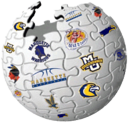Photo by Mitchell Layton | Getty Images
While playing around on with Team Sheets today, I decided to dig into ESPN's Basketball Power Index (BPI). Of the metrics included on the official NCAA Team Sheets, only BPI is owned by a media company. The Selection Committee uses averages of the metrics on the Team Sheets when it comes to seeding and selection, so what numbers are on there matters.
There are two types of metrics on the NCAA Team Sheets. Resume metrics look at wins and losses, similar to the old RPI. Quality metrics look at team efficiency, so the more you score and fewer you allow, the better you do. The easiest way to understand the difference is to look at a team like Providence, who has a great record, and thus excellent resume metrics (5.0 average) but with blowout losses and narrow win margins, comparably low quality metrics (36.7 average). BPI is one of those quality metrics, along with kenpom and Sagarin.
What is galling to some fans is that Mountain West teams in particular (and Marquette, for fans of this blog) fares far worse in BPI than they do the other quality metrics. While systems using different calculations will always have disparities, when one of those systems belongs to a media company that has contracts to broadcast some teams and not others, those disparities will be the ones that stand out the most.
I went through the top-100 teams in the NET and picked out every team where the BPI rank was 10 spots greater or worse than the other two quality metrics. I then looked at both the change made by the BPI in terms of how far it moved the team's quality average and also looked at who the team's conference has their media rights with. Here are the results, with teams in red being teams ranked worse by BPI and teams in green being ranked better by BPI:
| Team | BPI | KP | SAG | AVG | Change | TV |
| Marquette | 43 | 24 | 31 | 32.7 | -5.2 | Fox |
| Wyoming | 91 | 36 | 69 | 65.3 | -12.8 | Fox |
| Boise State | 56 | 29 | 38 | 41.0 | -7.5 | Fox |
| Colorado State | 86 | 50 | 40 | 58.7 | -13.7 | Fox |
| Virginia Tech | 21 | 35 | 35 | 30.3 | 5.3 | ESPN |
| Utah State | 74 | 31 | 53 | 52.7 | -10.7 | Fox |
| Belmont | 42 | 55 | 60 | 52.3 | 5.2 | ESPN |
| BYU | 80 | 46 | 42 | 56.0 | -12.0 | ESPN |
| Mississippi St | 27 | 49 | 45 | 40.3 | 6.7 | ESPN |
| Chattanooga | 57 | 68 | 88 | 71.0 | 7.0 | ESPN |
| Toledo | 62 | 72 | 75 | 69.7 | 3.8 | ESPN |
| Cincinnati | 88 | 78 | 78 | 81.3 | -3.3 | ESPN |
| Texas A&M | 60 | 76 | 80 | 72.0 | 6.0 | ESPN |
| Creighton | 94 | 77 | 64 | 78.3 | -7.8 | Fox |
| New Mexico St | 127 | 88 | 89 | 101.3 | -12.8 | ESPN |
| Clemson | 53 | 67 | 70 | 63.3 | 5.2 | ESPN |
| Richmond | 66 | 86 | 81 | 77.7 | 5.8 | ESPN |
| Stanford | 100 | 90 | 87 | 92.3 | -3.8 | Pac-12 |
| Colorado | 120 | 99 | 79 | 99.3 | -10.3 | Pac-12 |
| Wagner | 90 | 113 | 126 | 109.7 | 9.8 | ESPN+ |
| Liberty | 82 | 98 | 110 | 96.7 | 7.3 | ESPN+ |
It seems noteworthy that every single team who benefits more from BPI is in a league that has a contract with ESPN. It also seems noteworthy that 8 of the 11 teams that are harmed most by BPI have their primary contracts with networks other than ESPN. The only potential at-large team that is harmed by the BPI is BYU. Every other viable at-large candidate that is harmed is with Fox and every viable at-large candidate that is helped is with ESPN.
How much impact might this have? In the case of a team like Marquette or Belmont, it could move them up or down one seed line. For teams like Colorado State or Wyoming, it could be 2-3 seed lines and possibly even keep them out of the tournament altogether. For a team currently on the bubble, like the Big East's Creighton, BPI could be the reason they miss the NCAA Tournament. Considering the value of NCAA Tournament Credits, this is hugely impactful, particularly for leagues that rely on College Basketball and the NCAA Tournament for significant portions of their revenue.
Maybe it's coincidence. Maybe this is an outlier year. However this at the bare minimum has the appearance of potential impropriety. It is certainly plausible that the creators of BPI have found a way to weight their metric to help programs that have contracts with their company.
I don't know what goes into all the metrics present on the Team Sheets. Maybe BPI is on the up-and-up and this is just a coincidence. But if the NCAA values transparency, honesty, and good faith, they should remove BPI from the Team Sheets immediately. Media companies should not be able to put their fingers on the scales of the NCAA Selection, and it certainly seems plausible that's exactly what's going on with the BPI.


No comments:
Post a Comment